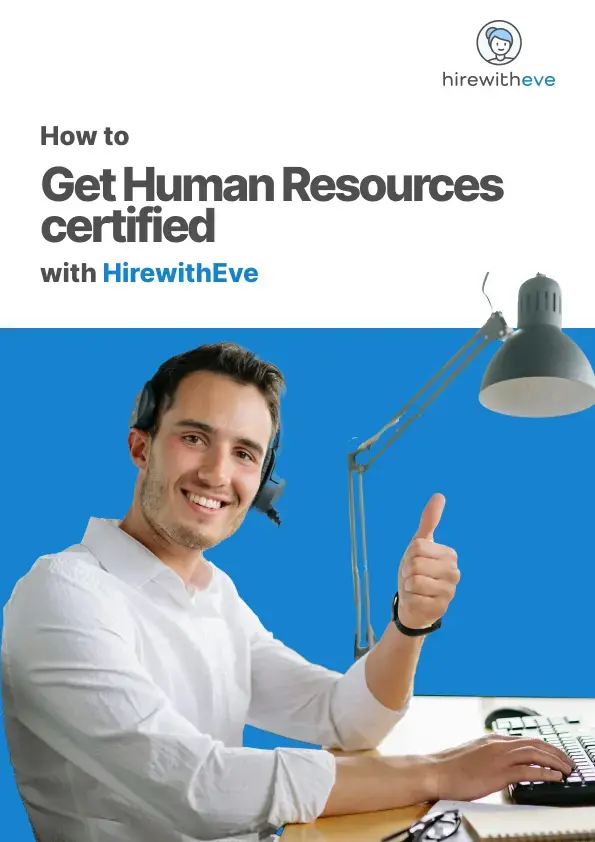Disciplinary Action at Work: An HR’s Guide
Disciplinary Action at Work: An HR's Guide

Handling disciplinary action at work is a challenging responsibility for HR managers and talent acquisition specialists. Ensuring a fair, consistent, and legally compliant process is essential in maintaining workplace harmony while addressing behavioral or performance issues. Effective management of disciplinary action at work helps avoid employee dissatisfaction, prevent legal complications, and maintain the company's reputation.
In this guide, we will discuss the importance of disciplinary action at work, explore different types of disciplinary actions, best practices for implementation, and some legal considerations.
Table of contents
Introduction
Handling disciplinary action at work is a challenging responsibility for HR managers and talent acquisition specialists. Ensuring a fair, consistent, and legally compliant process is essential in maintaining workplace harmony while addressing behavioral or performance issues. Effective management of disciplinary action at work helps avoid employee dissatisfaction, prevent legal complications, and maintain the company's reputation.
In this guide, we will discuss the importance of disciplinary action at work, explore different types of disciplinary actions, best practices for implementation, and some legal considerations.
What is Disciplinary Action at Work?
Disciplinary action at work refers to the steps taken by employers or HR departments to address employee behavior or performance issues that violate company policies or impact the workplace environment. This process is designed to correct employee misconduct, manage poor performance, or address breaches of company policies while ensuring that the organization maintains an orderly, productive, and safe work environment.
Disciplinary action at work can vary depending on the nature and severity of the issue and can range from verbal warnings to termination of employment. The key goal of disciplinary action at work is to address and rectify issues before they escalate further and impact the overall business.
Types of Disciplinary Action at Work
There are several forms of disciplinary action at work that HR managers can employ to address employee misconduct or poor performance:
Verbal Warning: A verbal warning is the initial step in addressing minor infractions or performance issues. It provides employees with an opportunity to correct their behavior before facing more formal consequences.
Written Warning: If verbal warnings fail to yield results, a written warning is issued. This formal document outlines the specific issues, expectations for improvement, and the potential consequences if the issue persists.
Suspension: In more severe cases, suspension without pay may be used as a temporary disciplinary action to give the employee time to reflect on their behavior and understand the gravity of the situation.
Demotion: Demotion can be used as a form of disciplinary action at work if an employee's performance or behavior affects their ability to fulfill their current role. A change in position or responsibility may help them reset expectations and perform better.
Termination: When all other attempts at correction fail, termination of employment is the final stage of disciplinary action. This is used when an employee consistently fails to meet company standards or violates critical policies.
Using appropriate disciplinary action at work ensures that companies can manage situations without escalating to unnecessary extremes and while maintaining fairness and consistency.
Best Practices for Implementing Disciplinary Action at Work
Implementing disciplinary action at work can be a delicate process. Here are some best practices HR managers and talent acquisition specialists should follow:
Consistency: Ensure that the same procedures are followed for all employees to avoid any claims of favoritism or bias. Disciplinary action at work should be applied uniformly to all employees, regardless of their position.
Document Everything: Keeping detailed records of all disciplinary actions at work is crucial. From the initial verbal warning to termination, documentation provides a paper trail that can be referred to if legal or compliance issues arise.
Clear Communication: When conducting disciplinary action at work, make sure the employee understands the issue, the steps they need to take to improve, and the potential consequences if the behavior continues.
Follow Legal Guidelines: Be aware of local labor laws and regulations that pertain to disciplinary action at work. Failing to comply with legal standards can lead to lawsuits and damage to the company’s reputation.
Progressive Discipline: Implement a progressive approach to disciplinary action at work by starting with minor warnings and escalating only if necessary. This allows the employee time to improve and shows that the company is willing to offer opportunities for correction.
Employee Feedback: Allow employees to share their perspective during the disciplinary process. Sometimes the root cause of poor behavior or performance can be an external factor that can be resolved with support.
By following these best practices, HR teams can ensure that disciplinary action at work is fair, effective, and legally compliant.
Legal Considerations for Disciplinary Action at Work
When handling disciplinary action at work, there are several legal considerations that HR managers must keep in mind to ensure compliance with local and national labor laws:
Anti-Discrimination Laws: Ensure that disciplinary action at work is not discriminatory. All employees should be treated equally regardless of their race, gender, age, or any other protected characteristic.
Employee Rights: Employees have the right to know the reasons for any disciplinary action taken against them. They also have the right to contest any decisions they believe are unfair or unjust.
Privacy Laws: Be cautious about how much information regarding disciplinary action at work is shared within the company. Maintaining employee confidentiality is critical to avoiding legal issues.
Unionized Workplaces: In unionized workplaces, HR managers must adhere to collective bargaining agreements when implementing disciplinary action at work. This includes following specific procedures and involving union representatives as necessary.
By staying informed about legal obligations, HR professionals can mitigate risks associated with disciplinary action at work and protect both the employee and the organization.
Common Mistakes to Avoid When Implementing Disciplinary Action at Work
While disciplinary action at work is necessary in certain situations, HR managers must be cautious to avoid common mistakes that can lead to further issues:
Lack of Documentation: Failing to document disciplinary action at work can lead to legal challenges if the employee contests the decision. Keep a detailed record of all actions taken.
Inconsistent Application: If disciplinary action at work is not applied consistently, it can lead to accusations of unfair treatment, which can result in lawsuits or employee dissatisfaction.
Ignoring Employee Feedback: Not allowing employees to explain their side of the story can result in resentment and disengagement. Always listen to the employee’s perspective before making any final decisions.
Rushed Decisions: Implementing disciplinary action at work without careful consideration can escalate issues. Always follow a structured and fair process to avoid unnecessary conflict.
Conclusion
Handling disciplinary action at work is a key responsibility for HR managers and talent acquisition specialists. By following best practices, understanding legal considerations, and avoiding common mistakes, HR professionals can ensure that they handle such situations fairly and effectively.
While HirewithEve is focused on skills-based hiring and improving recruitment processes, its robust platform can support companies in maintaining compliance during the hiring process, ensuring consistency in workforce management, and streamlining workflows. Whether it's integrating applicant tracking systems or offering analytics to evaluate employee performance, HirewithEve is the go-to platform for HR teams looking to improve both their hiring and employee management processes.
Target Your Talent
Unlock tailored solutions for your recruitment and hiring needs with Eve Platform's extensive case study library.
Subscribe now to enhance your HR expertise and excel in your role.
Free Resources

Transforming Hiring: 7 Key Recruiting Metrics
Enhancing recruitment processes with data-driven insights for better hiring outcomes.

Reducing Hiring Bias with Hirewitheve.
Utilizing Hirewitheve to combat bias and streamline recruitment processes effectively.

Hiring Detail-Oriented Candidates
HirewithEve enhances hiring by accurately assessing candidate's attention to detail-oriented.
